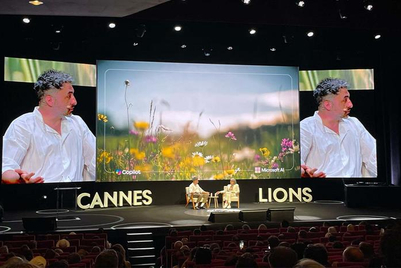
The impact of COVID-19 is a moving target as it continues to spread globally, one that is increasingly difficult to predict. But sensing there is a strong desire to see how brands expect to cope with the changes, Dentsu Aegis Network has taken a deeper look at how industries are facing disruption, how consumer behaviour is changing and more specifically how marketers in China are responding and adapting their business plans.
DAN surveyed 155 senior marketers and client leads from across its network in China between February 28 and March 3. The findings were packaged together with broader research and analysis in a 79-page report called Moving into a new normal: Forecasting the future post COVID-19.
Economic impact
Aggregating economic reports from the EIU, McKinsey and Oxford Economics, DAN notes the baseline prediction expects real GDP growth to drop from 6.1% last year to 5.4% in 2020, based on a quick recovery with the virus situation normalised by the end of Q2 and supply chain impacts largely temporary. A more pessimistic outlook sees a delay in normalisation until end of Q3 with a larger impact on supply chain, which knocks GDP growth down to 4.5%, with a worst case scenario of just 3% growth.

Central bank rate cuts and stimulus packages that include consumer incentives (financial subsidies for buying big ticket items like automobiles) will help. But as the report rightly points out, economic recovery will depend not merely on Chinese COVID-19 prevention and control, but the global response.
Impact on sales and marketing
Since January 23, 47% of marketers and client leadership DAN surveyed said sales have been significantly or severely affected.

While one might easily make the case to ramp up marketing efforts (and surely many CMOs will be) to make up for lost sales, 46% of DAN clients say their marketing budgets have been revised downwards for the year, with another 20% unclear as to how their budgets will be affected.

DAN's survey reveals that marketers are taking proactive steps to manage their responses. The most obvious shifts have seen activity shift from offline channels to online channels. The top response for 11% of marketers has been to adapt their creative, while another 11% have re-prioritised certain markets over others. Only 7% of respondents have stopped spending altogether.
Over the long-term as marketers look post-recovery from COVID-19, the most popular capabilities they plannned to invest in was is social media and influencer initiatives, followed by ecommerce and performance marketing. In-housing was relatively low on their priority list.

Short and long-term recommendations
DAN China suggests recognising shifts in behaviour and taking some appropriate actions both in the short and long-term.
On media spending, DAN suggests minimising, or at least evaluating OOH in the short-term at places like cinemas, airports and railways while increading spend on digital and official media sources like short videos and news sources. Live-streaming is gaining popularity during the crisis, DAN notes, and therefore might end up becoming more of "an essential touchpoint in more category decision journeys" in future.
Consumer short-term needs revolve around the demand for disinfectants and personal care products along with relieving from boredom caused by home quarantine. Marketers should prepare for behaviour shifts once the shut-ins are lifted, including a rise in consumption around major Q2 shopping festivals like Mothers Day and the 520 love festival.
Brands in the short term will need to use live-streaming, short videos and virtual enhancement to deliver offlien experiences online, the report says. Using communications that bring Chinese people together to fight a common enemy is also worth considering. Long-term, DAN suggest encouraging celebrating consumers' self-sacrifice and rewarding customers by paying closer attention to CRM.
|
This article is filed under... Top of the Charts: Highlights of recent and relevant research |



.jpg&h=334&w=500&q=100&v=20250320&c=1)


.png&h=334&w=500&q=100&v=20250320&c=1)




.png&h=334&w=500&q=100&v=20250320&c=1)





.png&h=268&w=401&q=100&v=20250320&c=1)
.png&h=268&w=401&q=100&v=20250320&c=1)

